#Tasmania bean
Text

#gourd#gourde#art nouveau#courge#LA PLANTE ET SES APPLICATIONS ORNEMENTALES#eugene grasset#botanical pattern#floral pattern#calabash#bottle gourd#white-flowered guord#long melon#birdhouse gourd#new guinea bean#tasmania bean#opo squash#lagenaria siceraria#cucurnita#lagenaria
6 notes
·
View notes
Text
Beautiful white gourd flower in my garden.It’s scientific name is calabash.


#garden#flowers#flower#calabash#nature#plants#Gourd Tree#Long Melon#White-flowered Gourd#Bottle Gourd#Green Leaf#Tasmania Bean
8 notes
·
View notes
Text



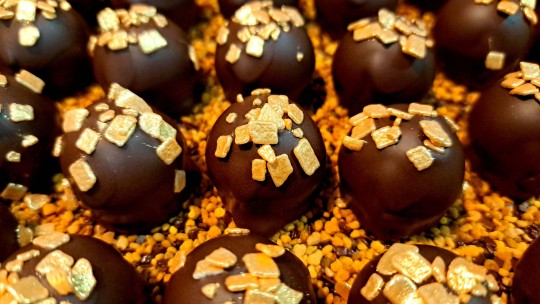
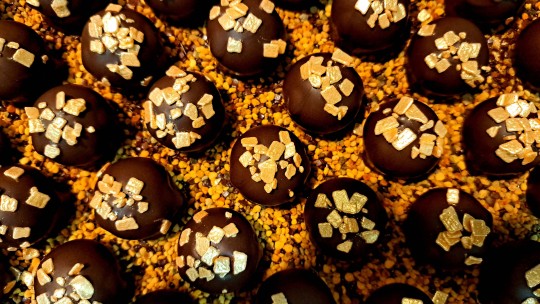

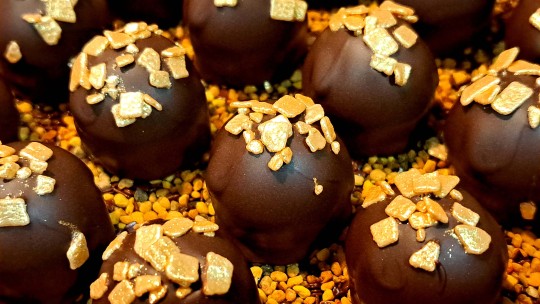

SELEUSS - TASMANIAN CHRISTMAS BUSH HONEY TRUFFLES
BATCH#: 1413, 1414
The Antipodean “Summer Christmas” Honey! Particularly in Summer, the Bursaria Spinosa erupts with millions of tiny white flowers the shape of a bursting star, hence the Christmas Bush. We combine Christmas Bush Honey from The Tasmanian Honey Co. with organic cream and our 32% LORETTA™ Light Milk Chocolate to complement its soft and mellow marzipan notes. Encased in a 30% BAUTA™ white chocolate first, then enrobed in a 66%+ COLOMBINA™ Semisweet, and rests on a bed of Spanish Bee Pollen with dark Pailletés fins and sprinkled with Golden Scaglietta flakes. (B1413, 1414) Pairing: Sauternes, Glenmorerangie Nector d’Or, and black teas.
TASMANIan CHRISTMAS BUSH HONEY TRUFFLE INGREDIENTS: ChocolateS (Cacao Beans, Sugar, Cacao Butter, Sunflower & soy Lecithin, Vanilla), TASMANIAN CHRISTMAS BUSH HONEY, organic cream, glucose. Rests on a bed of: BEE POLLEN, and pailletes fins (SUGAR, UNSWEETENED CHOCOLATE, COCOA BUTTER, WHOLE MILK POWDER, MILKFAT, NATURAL VANILLA FLAVOR), AND SPRINKLED WITH: GOLDEN SCAGLIETTA (SUGAR, DRIED WHOLE MILK, COCOA BUTTER, SOY LECITHIN, ARTIFICIAL FLAVORS, MICA-BASED PEARLESCENT, IRON OXIDE). CONTAINS: SOY, MILK, LACTOSE, honey. THIS PRODUCT IS PROCESSED IN A FACILITY THAT CONTAINS MILK, EGGS, WHEAT, HAZELNUTS, ALMONDS, PEANUTS AND OTHER NUTS. WARNING: Do not feed honey or honey related products like bee pollen to infants under 1 year of age. Ingredients From: ITALY, TASMANIA (AUSTRALIA), USA, FRANCE, Vietnam, PERU, SPAIN AND BELGIUM.






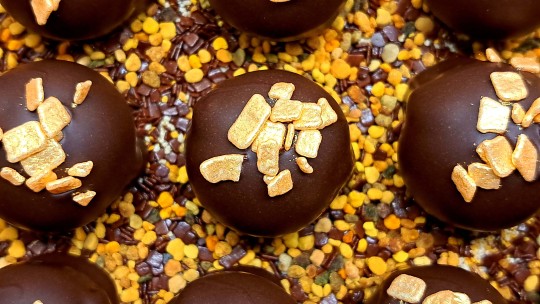

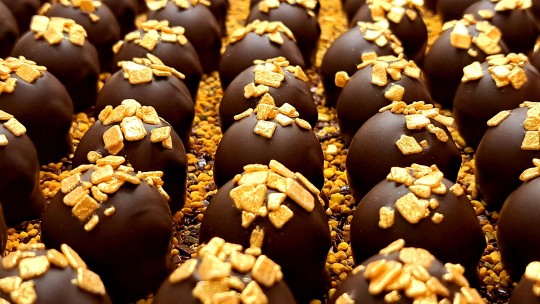



#seleuss#chocolates#tasmanian#tasmanianhoney#christmasbushhoney#christmas bush#bee pollen#beepollen#honeytruffles#honeychocolates#seleusschocolates#seleusshoney#chocolatetruffles#bursaria#bursariaspinosa#antipodean#seleusshoneytruffles#xmas#xmashoney#christmasbush
3 notes
·
View notes
Text

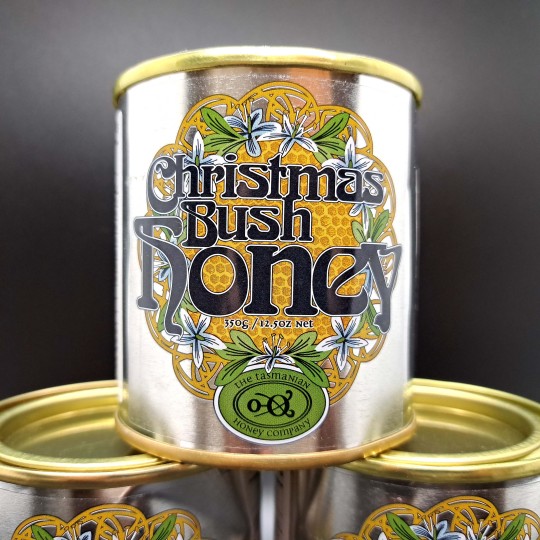
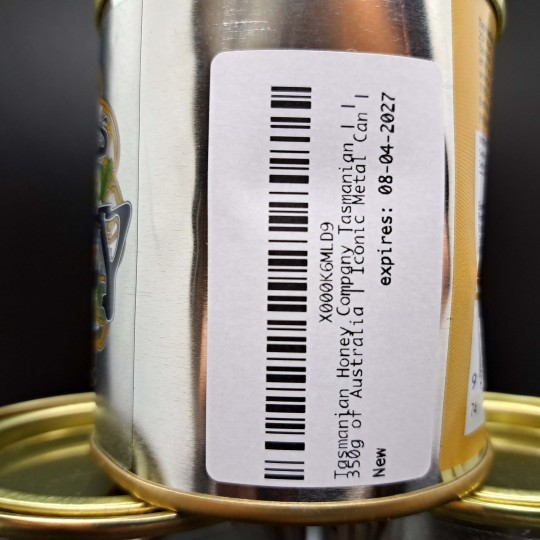






SELEUSS - TASMANIAN CHRISTMAS BUSH HONEY TRUFFLES
BATCH#: 1413, 1414
The Antipodean “Summer Christmas” Honey! Particularly in Summer, the Bursaria Spinosa erupts with millions of tiny white flowers the shape of a bursting star, hence the Christmas Bush. We combine Christmas Bush Honey from The Tasmanian Honey Co. with organic cream and our 32% LORETTA™ Light Milk Chocolate to complement its soft and mellow marzipan notes. Encased in a 30% BAUTA™ white chocolate first, then enrobed in a 66%+ COLOMBINA™ Semisweet, and rests on a bed of Spanish Bee Pollen with dark Pailletés fins and sprinkled with Golden Scaglietta flakes. (B1413, 1414) Pairing: Sauternes, Glenmorerangie Nector d’Or, and black teas.
TASMANIan CHRISTMAS BUSH HONEY TRUFFLE INGREDIENTS: ChocolateS (Cacao Beans, Sugar, Cacao Butter, Sunflower & soy Lecithin, Vanilla), TASMANIAN CHRISTMAS BUSH HONEY, organic cream, glucose. Rests on a bed of: BEE POLLEN, and pailletes fins (SUGAR, UNSWEETENED CHOCOLATE, COCOA BUTTER, WHOLE MILK POWDER, MILKFAT, NATURAL VANILLA FLAVOR), AND SPRINKLED WITH: GOLDEN SCAGLIETTA (SUGAR, DRIED WHOLE MILK, COCOA BUTTER, SOY LECITHIN, ARTIFICIAL FLAVORS, MICA-BASED PEARLESCENT, IRON OXIDE). CONTAINS: SOY, MILK, LACTOSE, honey. THIS PRODUCT IS PROCESSED IN A FACILITY THAT CONTAINS MILK, EGGS, WHEAT, HAZELNUTS, ALMONDS, PEANUTS AND OTHER NUTS. WARNING: Do not feed honey or honey related products like bee pollen to infants under 1 year of age. Ingredients From: ITALY, TASMANIA (AUSTRALIA), USA, FRANCE, Vietnam, PERU, SPAIN AND BELGIUM.

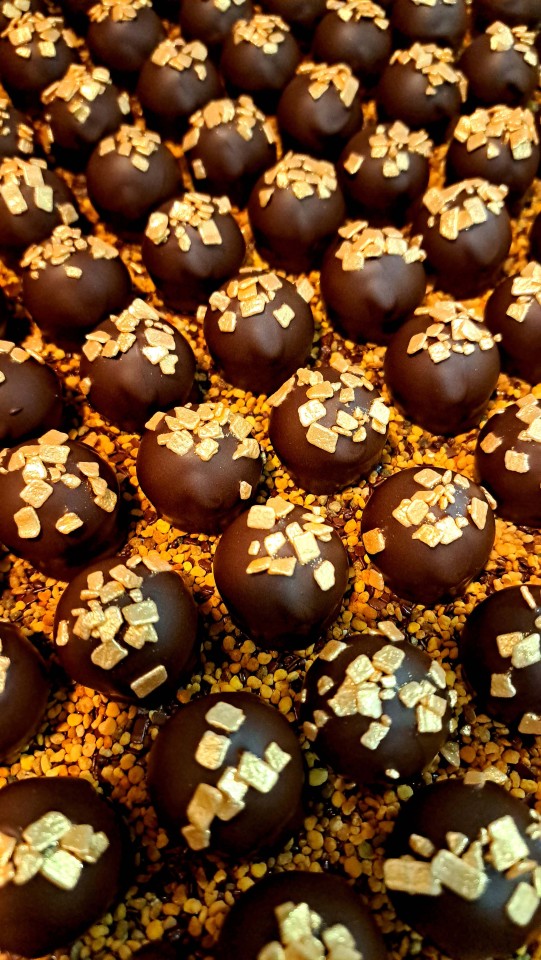

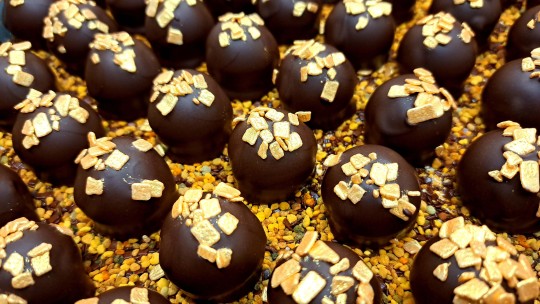




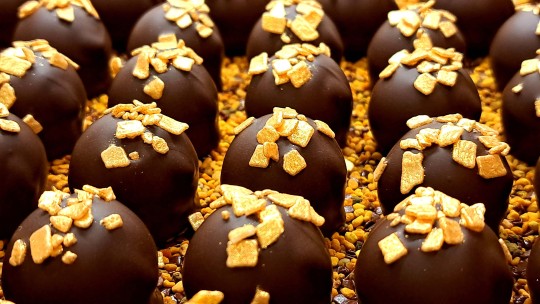


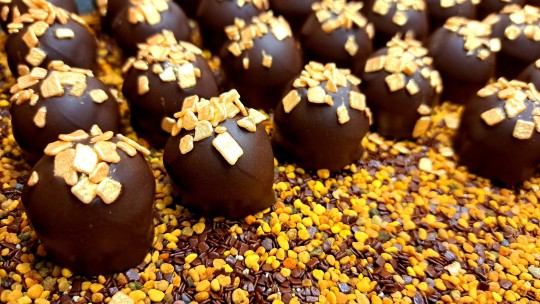


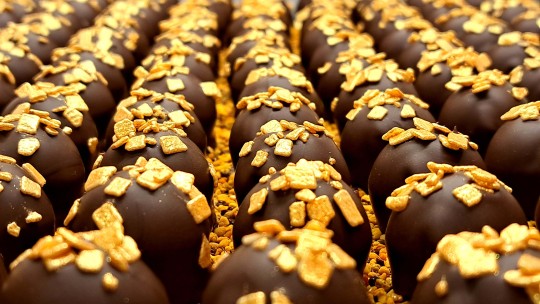
#seleuss#chocolates#tasmanian#tasmanianhoney#christmasbushhoney#christmas bush#bee pollen#beepollen#honeytruffles#honeychocolates#seleusschocolates#seleusshoney#chocolatetruffles#bursaria#bursariaspinosa#antipodean#seleusshoneytruffles#xmas#xmashoney#christmasbush
0 notes
Text



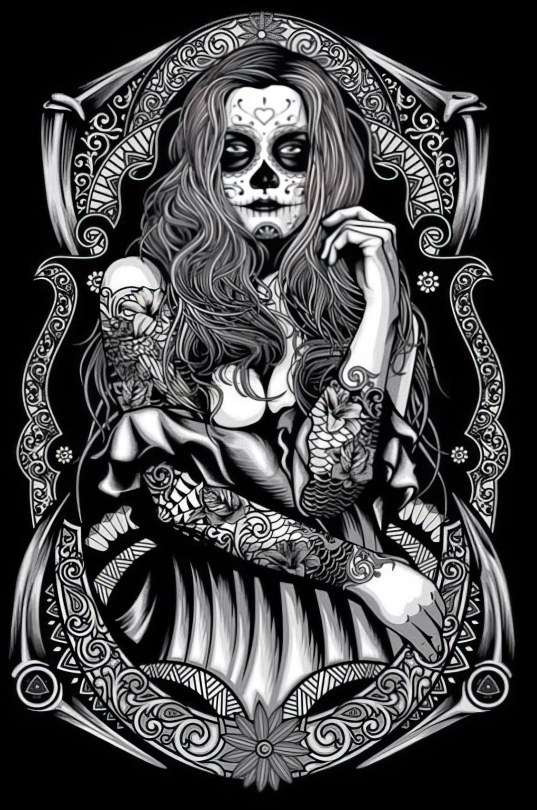
IMAGENES Y DATOS INTERESANTES DEL DIA 24 DE NOVIEMBRE DE 2023
Día Mundial de la Evolución, Día de No Comprar Nada (BND Buy Nothing Day), Black Friday, Día Mundial del Vino Tinto, Día Internacional del Ingeniero de Sistemas, Semana Mundial de Concienciación sobre la Resistencia a los Antimicrobianos (RAM), Semana Europea para la Reducción de Residuos, Año Internacional del Mijo y Año Internacional del Diálogo como Garantía de Paz.
Santa Fermina, Santa Flora y Santa Eanfleda.
Tal día como hoy en el año 2001
La Asamblea Nacional de Turquía ratifica las enmienda al artículo 41 de la Constitución para estipular la igualdad de los cónyuges en el matrimonio. Varios cambios notables en el Código Civil reflejan el nuevo acercamiento a la igualdad de géneros, por ejemplo, el esposo ya no es el jefe de familia y los cónyuges son compañeros a la par, administrando conjuntamente la unión con igual poder de decisión. (Hace 22 años)
1974
En el Gran Valle del Rift, concretamente en el triángulo de Afar (Etiopía), el paleoantropólogo estadounidense Donald Johanson encuentra los restos fósiles de Lucy, una mujer adulta de la especie Australopithecus afarensis, de 20 años de edad y 1,1 metros de altura y 3,2 millones de años, que ya caminaba erguida. Es el primer hallazgo de un humanoide bien conservado que explica el nexo entre primates y humanos. (Hace 49 años)
1969
El Apolo XII, segunda misión que pone al hombre en la Luna, regresa a salvo a la Tierra. Lanzado desde Centro Espacial Kennedy (Florida, EE.UU.) el pasado 14 de noviembre con tres astronautas a bordo: Alan L. Bean, piloto del Módulo Lunar Intrepid; Richard Gordon, piloto del Módulo de Comando Yankee Clipper; y el comandante de la nave espacial Charles Conrad. El Módulo lunar Intrepid, aterrizó el 19 con los astronautas Conrad y Bean en la superficie de nuestra Luna en lo que se conoce como el Océano de las Tormentas, donde permanecieron 31 horas y media. (Hace 54 años)
1874
En Estados Unidos, Joseph Golden obtiene la patente del alambre de espino. Con este novedoso invento se modificarán modos de vida: el vaquero que se dedica a trasladar su ganado en largos viajes a la búsqueda de pastos desaparecerá al ir disminuyendo los terrenos abiertos y libres. Este alambre también dará lugar al inicio de enfrentamientos entre colonos y ganaderos. Poco a poco, los ranchos con ovejas y ganado reemplazarán al campo abierto y los vaqueros se convertirán en peones de rancho. (Hace 149 años)
1859
Charles Darwin publica su magna obra "El Origen de las Especies", fruto de más de 20 años de trabajo de investigación, observación minuciosa y detallada y viajes a bordo del hermoso bergantín "Beagle" como naturalista, en un periplo que duró cinco años por ambas costas de Sudamérica, Galápagos, Tahití, Nueva Zelanda, Australia, Tasmania, isla de Keeling, Mauricio, Brasil y las Azores. Fue capaz de percibir las sutiles diferencias entre los pájaros del archipiélago de las Galápagos que viven en medios naturales distintos. En su libro manifiesta científicamente su teoría de la selección natural como causa del impulso evolutivo de las especies. La inspiración para esta teoría la halló en el gran economista inglés Thomas Malthus. (Hace 164 años)
1820
Tras batalla de Cepeda, librada el 1 de febrero de este año, los representantes de las provincias de Buenos Aires y Santa Fe, los generales Martín Rodríguez y Estanislao López respectivamente, se reúnen en el día de hoy en la estancia de Tiburcio Benegas, ubicada a orillas del Arroyo del Medio (Argentina), y ponen fin a la guerra entre Buenos Aires y Santa Fe, mediante la firma del Tratado de Benegas, en el cual además se establece la reunión de un futuro congreso en Córdoba. (Hace 203 años)
1642
El explorador y navegante holandés Abel Janszoon Tasman, al servicio de la Compañía Neerlandesa de las Indias Orientales, que el 14 de agosto zarpó de Batavia (Yakarta) para investigar la viabilidad de un paso marítimo hacia Chile por el este y para explorar Nueva Guinea, descubre la actual isla de Tasmania, a la que llamó "Tierra de Van Diemen" en honor del gobernador general de su Compañía. Posteriormente, colonizadores británicos le cambiarán el nombre. Asimismo, cuando se encuentre realizando su viaje de regreso a Yakarta el 21 de enero de 1643, descubrirá el archipiélago de las islas Tonga. (Hace 381 años)
1 note
·
View note
Text


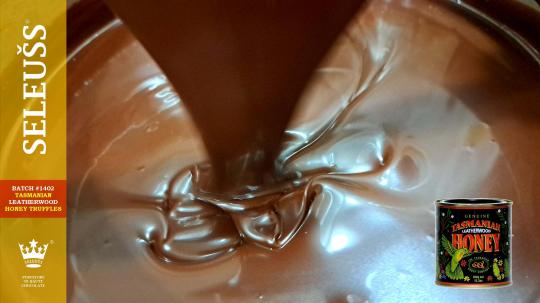

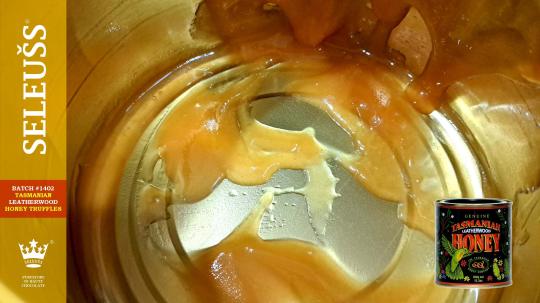
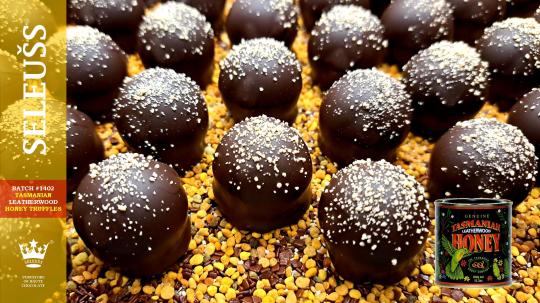

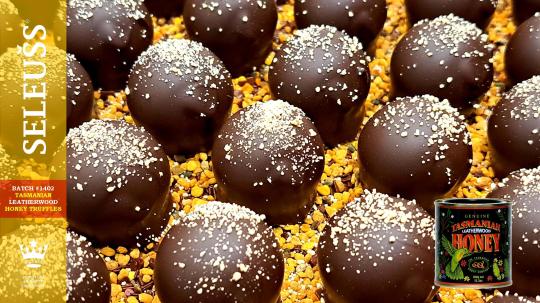

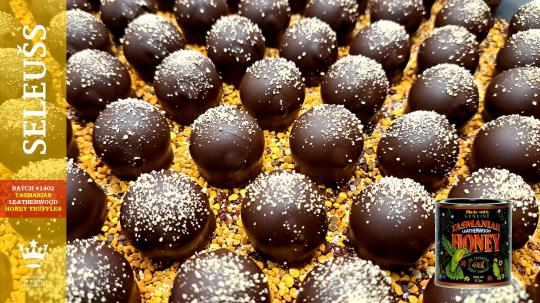



SELEUSS - TASMANIAN LEATHERWOOD HONEY TRUFFLES
BATCH 1402, 1403, 1404
LEATHERWOOD Honey is one of the world’s most unique and rare wild honeys, collected from the Leatherwood tree (Eucryphia Lucida), endemic to the forests of Western Tasmania, Australia and long rumored to be a favorite of the Tasmanian Devil*. We combine LEATHERWOOD Honey from The Tasmanian Honey Company with organic cream and a formulated 57%+ COLOMBINA™ Semisweet Dark Chocolate to complement its piquant floral complexity. Hand-enrobed in a 76%+ MORETTA™ Dark Chocolate, and rests on a bed of Spanish Bee Pollen with Chocolate Pailletés fins and sprinkled with Honey Crystals. (B1402, 1403) Pairing: Porto, espressos & black teas.
TASMANIan LEATHERWOOD HONEY TRUFFLE INGREDIENTS: Chocolate (Cacao Beans, Sugar, Cacao Butter, Sunflower & soy Lecithin, Vanilla), TASMANIAN LEATHERWOOD HONEY, organic cream, glucose. Rests on a bed of: BEE POLLEN, and pailletes fins (SUGAR, UNSWEETENED CHOCOLATE, COCOA BUTTER, WHOLE MILK POWDER, MILKFAT, NATURAL VANILLA FLAVOR), AND SPRINKLED WITH: HONEY CRYSTALS (cane SUGAR, honey). CONTAINS: SOY, MILK, LACTOSE, honey. THIS PRODUCT IS PROCESSED IN A FACILITY THAT CONTAINS MILK, EGGS, WHEAT, HAZELNUTS, ALMONDS, PEANUTS AND OTHER NUTS. WARNING: Do not feed honey or honey related products like bee pollen to infants under 1 year of age. Ingredients From: France, TASMANIA (AUSTRALIA) , USA, COLOMBIA, Vietnam, italy, Ecuador, AND SPAIN.
#seleuss#chocolates#seleusshoney#seleussleatherwood#leatherwoodhoney#tasmania#tasmanianhoney#tasmanianleatherwoodhoney#tasmanian leatherwood honey#honeychocolates#honeytruffles#seattlechocolatiers#bestchocolatesinseattle#seattlesbestchocolates#purveyors of haute chocolate#purveyors of chocolate#purveyorsofhautechocolate#tasmanianhoneycompany#milepost65
0 notes
Text
Budget Adventures: Melbourne & Tasmania
Budget Adventures: Melbourne & Tasmania. Read more here:
By June Ramli
I recently went on a whirlwind trip to Melbourne and Tasmania from Sydney for a mere $100 round-trip. Let me spill the beans on how I did it.My round-trip to Melbourne was a steal at $45, and my Tasmania jaunt was a cool $79.11 for both legs. How? I stuck to the seven kg luggage limit, skipped inflight meals, and left seat selection to the computer.On my way to Melbourne, I ended…

View On WordPress
0 notes
Note
Hello! It's your secret Santa again 💝 I hope you’ve had a nice week and weekend? Can I ask about what you've been up to? And wow, I saw on your about page that you do songs and circus videos? I’d love to hear more about that! 💗 Are those your main hobbies/interests?
Oh, I can definitely see why you love Chanyeol then! ❣️ He’s such a happy pill, and a daring one too (which is very apparent in their variety shows, yes!) and I agree - he’s ridiculously talented and handsome as well 😖💘 I also discovered Exo through Call me baby! That song + Overdose had me gaping in awe, they were like nothing I’d ever seen before! ✨ Was Call me baby your first era then? I became an Exo-L in 2016 so my first era was the Monster era~
Ahh Yixing is such a sweetie, I understand why you fell for him too 💕 I gave my heart to Junmyeon right away, and even if the others (especially Kyungsoo) have been fighting him for the bias spot I have to say that it doesn't look like they'll succeed any time soon haha 💜
I’m glad I got it right! ✨ Did you get into Seventeen before or after Exo? And what do you like about Jihoon in particular? I’ve gotten the impression that they’re pretty amazing as well, but since they’re so many it’s been hard to find the courage and energy to actually get to know them haha 😅 but I’ll see if I can give it a try someday soon! Any tips on where to start? And do you have any favourite songs by them? (And by Exo?)
Me too! 🎨 And I also love vibes like that, so hopefully I’ll get that down at least 💓 Oh, don't worry, I don’t have any problem with drawing ships, but thank you for giving me multiple options - I’ll see what I can come up with!!
💫 ~I wish you all the best for this upcoming week~ 💫
-🎅
Hey! So sorry for the late reply, I went on holiday for a week with my friends and the signal was so bad with barely any wifi, and then I came home and had to go back to work instantly!
I definitely need to update my page haha, I haven't done circus since i was like 21 (i'm 26 now) but it was a huge part of my life, I did it from the ages of like 12 - 21 and even moved to Tasmania at one point to work at a circus over there. Nowadays, I still sing a lot but haven't filmed any singing vids forever, I mostly just write fanfic as my main hobby at the moment haha, I have 3 jobs so it's kinda hard to find time for hobbies outside of consuming kpop content!
What about you? What are your hobbies?
I thought call me baby was my first era but I literally just realised yesterday that I also became an exo-l in 2016 so monster was my first era with them too! I was like obsessed with exo from the moment i saw them for the first time haha
I love Yixing so so much, I miss his interactions with exo so much all the time, he's the sweetest lil bean! Omg i love that you were able to stick with Junmyeon, he's the best! I pretty much never stick with the same bias that i have when i first discover a group, like i'll be bias wrecked and then the person who bias wrecked me will stay as my bias for good, like with seventeen i thought i was Joshua biased when i discovered seventeen and then Jihoon just whisked me away haha. OMG Kyungsoo at the moment needs to just stop, I can't handle it haha.
I got into seventeen after exo and was definitely more seventeen focused for a bit but I always came back to Exo! Jihoon is very introverted which I really relate to so I think that's what made me gravitate towards him, plus he's just really cute and soft whilst simultaneously being a huge grump and i just love those vibes haha. He's also super talented, like his singing voice is gorgeous and hes basically produced like all of seventeen's songs! I get that haha, I find that watching their reality showing going seventeen really helped with getting to know them! My favourite seventeen song is actually a song by just 3 of the members and ailee called Q&A, it's so good, i highly recommend checking it out! I love like so many exo songs but Unfair always seems to stick as my fave, i just love the vibe of it so much!
Amazing, i'm super excited to see what you come up with!
Hope you're well!
0 notes
Photo

Today’s #morning #coffee #ritual begins with 18 grams of #beans from @villinocoffee #Hobart #Tasmania #photoOfTheDay #iPhoneOnly https://instagr.am/p/Cu6RcKsLejj/
0 notes
Text

EXOTIC VEGGIES: UPOGinisang Upo is a popular vegetable side dish in Philippine Cuisine. It is often made with ground beef, pork or shrimp. The main ingredient in the recipe is upo. In English upo is called a bottle gourd. Other names for this vegetable are: calabash, white-flowered gourd, long melon, birdhouse gourd, New Guinea bean, and Tasmania bean. Ginisang upo literally means “sautéed bottle gourd.”. Here are a couple of recipes found at food blogs.Ginisang Upo with Pork - Kawaling Pinoy~ https://www.kawalingpinoy.com/ginisang-upo-with-pork/ Ginisang Upo (Sautéed Opo Squash with Shrimp) - Seaside Recipes (image)~ https://seasiderecipes.com/ginisang-upo/ Here is a cooking video. The dish is very easy to prepare.https://youtu.be/WW3YuCtsofI
0 notes
Text

#LA PLANTE ET SES APPLICATIONS ORNEMENTALES#gourd#gourde#art nouveau#eugene grasset#cucurbita#Calabash#bottle gourd#white-flowered gourd#long melon#birdhouse gourd#New Guinea bean#Tasmania bean#opo squash#floral illustration#botanical illustration#Lagenaria siceraria#Lagenaria
7 notes
·
View notes
Text
Teachers at remote schools in Tasmania struggle as allowances stagnate for a decade, union says
Teachers at remote schools in Tasmania struggle as allowances stagnate for a decade, union says
Allowances for teachers in Tasmania’s most remote schools have not budged for a decade, leaving many scrambling to cover soaring costs of living, the education union said.
Key points:
The allowance rate has no statutory mechanism to increase
The state government can decide to increase it, but that hasn’t happened since 2012
AEU president says he heard of beans being sold for $50 a kilo in…

View On WordPress
0 notes
Text

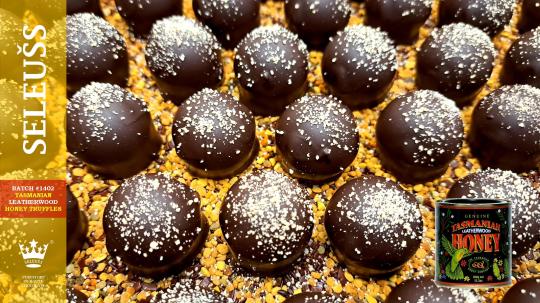

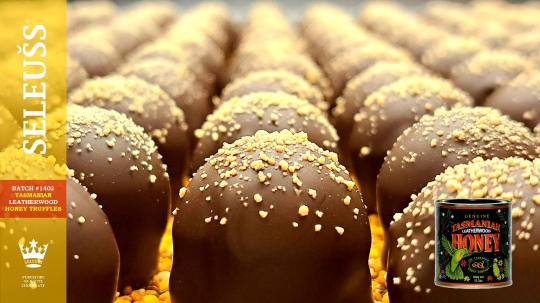





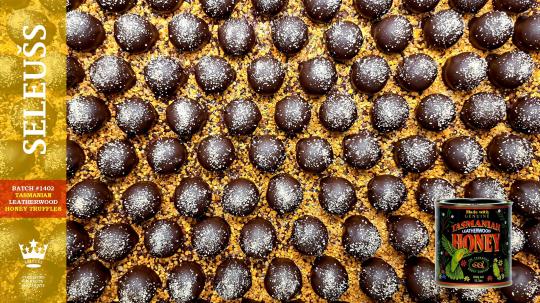
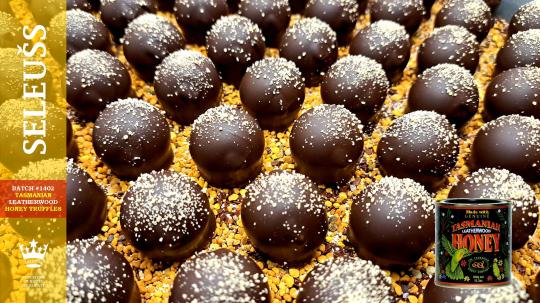

SELEUSS - TASMANIAN LEATHERWOOD HONEY TRUFFLES
BATCH 1402, 1403, 1404
LEATHERWOOD Honey is one of the world’s most unique and rare wild honeys, collected from the Leatherwood tree (Eucryphia Lucida), endemic to the forests of Western Tasmania, Australia and long rumored to be a favorite of the Tasmanian Devil*. We combine LEATHERWOOD Honey from The Tasmanian Honey Company with organic cream and a formulated 57%+ COLOMBINA™ Semisweet Dark Chocolate to complement its piquant floral complexity. Hand-enrobed in a 76%+ MORETTA™ Dark Chocolate, and rests on a bed of Spanish Bee Pollen with Chocolate Pailletés fins and sprinkled with Honey Crystals. (B1402, 1403) Pairing: Porto, espressos & black teas.
TASMANIan LEATHERWOOD HONEY TRUFFLE INGREDIENTS: Chocolate (Cacao Beans, Sugar, Cacao Butter, Sunflower & soy Lecithin, Vanilla), TASMANIAN LEATHERWOOD HONEY, organic cream, glucose. Rests on a bed of: BEE POLLEN, and pailletes fins (SUGAR, UNSWEETENED CHOCOLATE, COCOA BUTTER, WHOLE MILK POWDER, MILKFAT, NATURAL VANILLA FLAVOR), AND SPRINKLED WITH: HONEY CRYSTALS (cane SUGAR, honey). CONTAINS: SOY, MILK, LACTOSE, honey. THIS PRODUCT IS PROCESSED IN A FACILITY THAT CONTAINS MILK, EGGS, WHEAT, HAZELNUTS, ALMONDS, PEANUTS AND OTHER NUTS. WARNING: Do not feed honey or honey related products like bee pollen to infants under 1 year of age. Ingredients From: France, TASMANIA (AUSTRALIA) , USA, COLOMBIA, Vietnam, italy, Ecuador, AND SPAIN.
#seleuss#chocolates#seleusshoney#seleussleatherwood#leatherwoodhoney#tasmania#tasmanianhoney#tasmanianleatherwoodhoney#tasmanian leatherwood honey#honeychocolates#honeytruffles#seattlechocolatiers#bestchocolatesinseattle#seattlesbestchocolates#purveyors of haute chocolate#purveyors of chocolate#purveyorsofhautechocolate#tasmanianhoneycompany#milepost65
0 notes
Text
2021 Reading Log, pt 32

156. PNSO Encyclopedia for Children: The Secrets of Ancient Sea Monsters by Zhao Chuang and Yang Yang. This is probably the least of the three PNSO Secrets of books. The text comes off as awfully judgmental about the swimming capabilities of a number of the marine reptiles covered within, and the inconsistencies in the art are noticeable (a Tylosaurus depicted with clawed flippers on one page, without on another, that sort of thing). A number of the anecdotes in the book were already inaccurate when it was written in 2015 (Elasmosaurus with swan-like necks attacking fish from above, plesiosaurs in general beaching themselves to lay eggs). I do commend the coverage, however. About five placodontids appear in the book, as well as several choristoderes and pistosaurs. And most books aimed at this age set view marine reptiles as a sideshow for the dinosaurs, instead of devoting an entire volume to them.
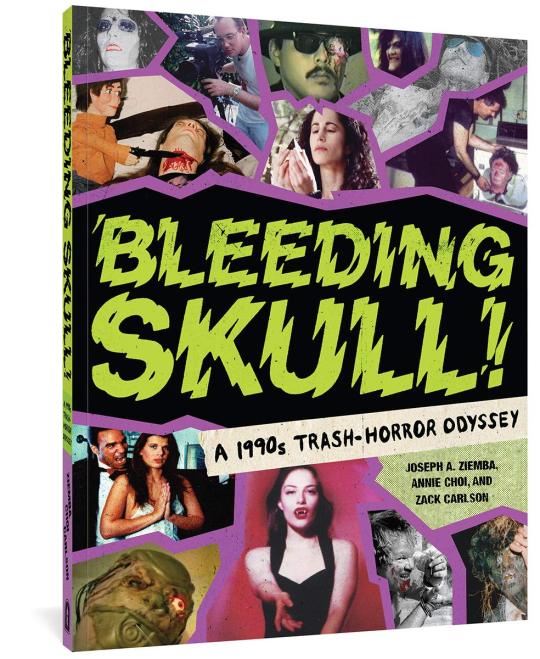
157. Bleeding Skull! A 1990s Trash Horror Odyssey by Joseph A. Ziemba, Annie Choi and Zack Carlson. This book is a collection of reviews about direct-to-video horror movies of the 1990s, almost all of them independently produced and shot on video. There’s a genuine affection for the movies involved—Ziemba is the director of the American Genre Film Archive, and you don’t have that kind of position if you don’t love schlock. It’s basically the book I wanted Analog Nightmares from last year to be: it’s not uncritical of the Z-grade movies on display, but instead can tell the difference between a good viewing experience and a bad one. And I may have developed a parasocial crush on Annie Choi based on her writings found here.

(note: this is not the cover of the edition I read, but that’s a library-bound copy that’s more than a century old. Unsurprisingly, no images of that exact version exist online, and it’s a pretty boring cover besides)
158. Curious Myths of the Middle Ages by Sabine Baring-Gould. The oldest book I’ve read this year, published originally in 1866, in an American edition from 1894. Baring-Gould was a pioneer of folklore studies, and is writing primarily about European myths—Prester John, Pope Joan, William Tell and the like. Baring-Gould has a passion for the idea of the Ur-Myth later espoused by authors like James Frazer in The Golden Bough, and like in that book is a little too eager to assume that the Indian version of all of these Indo-European stories is the “original”. He’s also definitely blinded by his role as an Anglican minister. He accuses basically everyone except Catholics and Anglicans of being idolaters and heretics (in later chapters he is especially huffy about Methodists secretly being holdovers of Druidism), is wildly antisemetic at times, and occasionally views stories as corrupted versions of the Biblical truth. A valuable resource for people interested in European myth and folklore, but not one to be taken uncritically.

159. Around the World in 80 Plants by Jonathan Drori, illustrated by Lucille Clerc. This book is as much about the social history of plants as it is about their biology. The countries the plants are attributed to are ones where the plant has cultural importance rather than necessarily being its origin. For example, castor beans are discussed in Italy in the context of Fascist torture methods, and opium poppies are covered under Australia because Tasmania is a major global supplier. The tone is droll, slightly moralizing, and very British. The illustrations, which to my untrained eye appear to be in pastels and colored pencil, are lovely. The book is worth checking out on their merit alone.
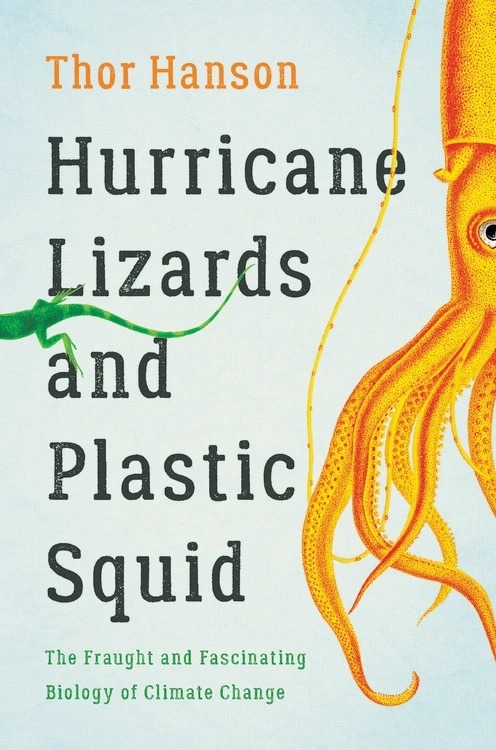
160. Hurricane Lizards and Plastic Squid by Thor Hanson. The subject of the book is how the behavior and evolution of life is changing in response to climate change. Range shifts, behavioral and phenotypic plasticity, and evolutionary adaptations are all covered here. The tone is conversational, and the topics covered flow well together. I like the focus on individual scientists, their research, and the recurring theme of all of these specialists pivoting to climate change studies as the 20th century ended and the 21st century began. What I didn’t like was how the last chapter doubled down on personal responsibility being the primary way to solve the climate crisis. The average person supports green policies! It’s the fossil fuel companies and their inroads into government that are preventing it from happening! Turning off the lights when we leave the room isn’t going to fucking cut it, Thor!
#reading log#medieval folklore#b-movies#climate change#evolution#ecology#botany#marine reptiles#children's books#paleontology#gore tw#sorta
44 notes
·
View notes
Link
Inside an aging industrial park, a nutty, sweet aroma wafts through the air. Smoke billows out of one particular shophouse in a row of red-brick, one-story factories.
Inside, four men clad in polo shirts, hair nets, masks, and heavy-duty gloves emerge from the smoke. With metal rods, they repeatedly slam a mound of caramelized coffee beans inside a tub, breaking them apart. These are employees of Kim Guan Guan, one of the last traditional coffee roasters in Singapore.
Jason Soon founded Kim Guan Guan in 1988. Initially, he saw coffee as only a business opportunity. For years, all he did was import and sell raw coffee beans. But soon, coffee grew into his passion. In 1996, Soon bought a coffee roasting factory and learned how to make kopi, a style of coffee unique to Southeast Asia.
When robusta beans are cooked with copious amounts of sugar and margarine, then ground and brewed, the result is a distinctively thick, luscious cup of coffee. Often, the coffee is made using a flannel sock as a filter, and poured into ceramic or glass cups from long-sprouted kettles to create a frothy, smooth brew. It can be drunk black, or with sugar and evaporated milk.
However, kopi is commonly considered low-grade compared to gourmet brews. Roasters blame this on the price. One cup of kopi costs less than S$2 ($1.49 USD) and is usually purchased at the hot, open-air food courts called kopitiams. An Americano, in contrast, sells for at least twice as much at chic cafes.
Yet kopi has a rich history. According to Soon, this roast dates back to the 19th century. European settlers in colonial Singapore had a habit of drinking coffee. They imported arabica beans, which merchants coated with sugar to preserve it during shipping. When locals picked up the habit as well, many could only afford the cheaper robusta beans grown in Indonesia.
To mimic the flavor of the more-expensive arabica, they cooked the beans with butter or margarine, as well as sugar. Robusta beans have around twice the amount of caffeine as arabica, more bitterness, and less acidity. As a result, kopi, which means “coffee” in Malay, became the regional favorite for its caffeine content, sweetness, and cheapness.
In Soon’s factory, one batch of coffee takes 45 minutes to roast. In the first 35 minutes, the beans are cooked at around 240°C (464°F). Keen-eared roasters must listen to a certain sequence of crackling that signals doneness. Next, the beans are poured into a wok of caramel that emits a cloud of thick white vapor as moisture from the melted sugar evaporates. The roaster tosses the blend to make sure all the beans are thoroughly coated, and adds a healthy helping of margarine. For every 60 kilograms (132 pounds) of beans, Kim Guan Guan uses 18 kilograms of sugar (40 pounds) and 1.7 kilograms (3.7 pounds) of margarine.
Once ready, the beans are poured into a metal tub and the workers quickly separate the smoking beans before the sugar crystallizes. Once the beans are cooled, the roasters store them in gunny sacks before grinding them and shipping the coffee off to customers.
Kim Guan Guan produces 2.5 tons of coffee a day, and clients include local coffee chains, grocers, and hawker stalls. Soon, 54, says he exclusively roasts kopi for two reasons. One, he doesn’t want his palate to be affected by other brews. Secondly, he sees a mission in sustaining the dying art of kopi roasting. “If us manufacturers don’t work hard at preserving it, who will?” he asks. “This is part of Singapore’s heritage.”
Kopi is integral to Singapore’s culture because of its ubiquity, says Nicole Tarulevicz, a history professor at the University of Tasmania who studies the country's culinary heritage. Kopitiams are everywhere across the island, so people can grab their cup of joe anytime they want.
Drinking kopi lets tourists feel like they are getting the authentic Singaporean experience and helps residents connect to their country. “It’s a way of saying that we’re really Singaporeans,” Tarulevicz says. “In a place where there’s been a lot of change...I think it is quite comforting.”
Coffee is still the hottest drink in Singapore, but even that faced change after the third-wave coffee movement arrived in the late 2000s. These days, few people in Singapore want to enter a trade this labor-intensive, Soon says, with its long hours in a hot and smoky room. Young people prefer to work with high-end arabica beans roasted in clean, air-conditioned rooms: no butter or caramel in sight.
Jimmy Ng, the owner of Fresh Roaster, has difficulty finding workers. Out of his nine roasters, only two are Singaporeans and the rest are foreigners. Ng also started out as a coffee distributor in 1979, before setting up his own factory in 1997. Both he and Soon reckon there are only around 10 local kopi roasters left today, down from the 20 that existed when they started their businesses, and far from the heyday of the 1960s when hawkers roasted their own coffee in alleyway stalls.
While coffee roasters in Singapore itself are getting rarer, kopi’s global footprint is expanding every day. Kopi is now available worldwide through Singaporean coffee chains such as Ya Kun Kaya Toast and Killiney Kopitiam, which have opened stores from Palo Alto to Tokyo.
But in Singapore, a lack of properly roasted beans looms on the horizon. Small local kopitiams will have to look for new suppliers if the traditional ones close down, or perhaps import their roasted coffee from Malaysia, where kopi is also a standard.
But there are younger Singaporeans trying to keep the kopi-roasting tradition alive. Faye Sai is the third-generation owner of Coffee Break. In 2014, she and two siblings took over their family kopitiam when their father retired. “We definitely don’t see young people doing it [and] realized that this trade is quite precious,” the 34-year-old says.
Ever since they took over the business, the siblings have expanded the menu to include modern flavors with their traditionally roasted kopi, such as sea salt caramel and matcha, to great success.
Guan Lim, head of the Queen’s Coffee roastery and a member of the Singapore Coffee Association, has another solution to the kopi dilemma: raising the price of a cup. “Profit margins are nearly zero. We need to make this trade more lucrative, otherwise there’s no way we can hold on,” he says.
No matter what, Soon and Ng are certain that kopi will always be in demand locally. What they are less sure about is its quality. It is likely that more businesses will roast or buy their coffee from abroad as more Singaporean roasters close down. “It will no longer be authentic if kopi is manufactured overseas,” says Soon.
At the moment, the future of both Soon and Ng’s roasters are precarious. Soon is unsure whether his children will take over the business. Ng, who is 63, says he hopes to find a buyer before he retires. “If I can’t sell the business, then I have no choice. It will close for good,” he says.
54 notes
·
View notes
Text





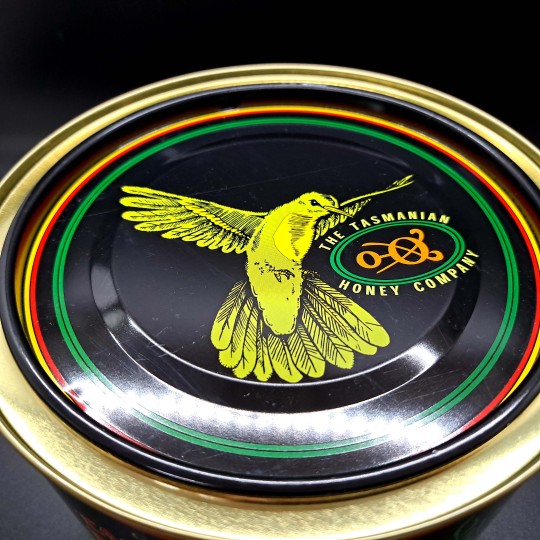



SELEUSS - TASMANIAN LEATHERWOOD HONEY TRUFFLES
BATCH 1402
LEATHERWOOD Honey is one of the world’s most unique and rare wild honeys, collected from the Leatherwood tree (Eucryphia Lucida), endemic to the forests of Western Tasmania, Australia and long rumored to be a favorite of the Tasmanian Devil*. We combine LEATHERWOOD Honey from The Tasmanian Honey Company with organic cream and a formulated 57%+ COLOMBINA™ Semisweet Dark Chocolate to complement its piquant floral complexity. Hand-enrobed in a 76%+ MORETTA™ Dark Chocolate, and rests on a bed of Spanish Bee Pollen with Chocolate Pailletés fins and sprinkled with Honey Crystals. (B1402, 1403) Pairing: Porto, espressos & black teas.
TASMANIan LEATHERWOOD HONEY TRUFFLE INGREDIENTS: Chocolate (Cacao Beans, Sugar, Cacao Butter, Sunflower & soy Lecithin, Vanilla), TASMANIAN LEATHERWOOD HONEY, organic cream, glucose. Rests on a bed of: BEE POLLEN, and pailletes fins (SUGAR, UNSWEETENED CHOCOLATE, COCOA BUTTER, WHOLE MILK POWDER, MILKFAT, NATURAL VANILLA FLAVOR), AND SPRINKLED WITH: HONEY CRYSTALS (cane SUGAR, honey). CONTAINS: SOY, MILK, LACTOSE, honey. THIS PRODUCT IS PROCESSED IN A FACILITY THAT CONTAINS MILK, EGGS, WHEAT, HAZELNUTS, ALMONDS, PEANUTS AND OTHER NUTS. WARNING: Do not feed honey or honey related products like bee pollen to infants under 1 year of age. Ingredients From: France, TASMANIA (AUSTRALIA) , USA, COLOMBIA, Vietnam, italy, Ecuador, AND SPAIN.
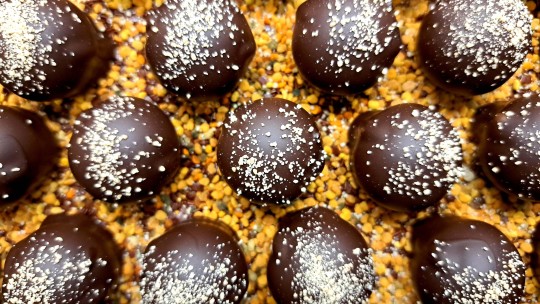
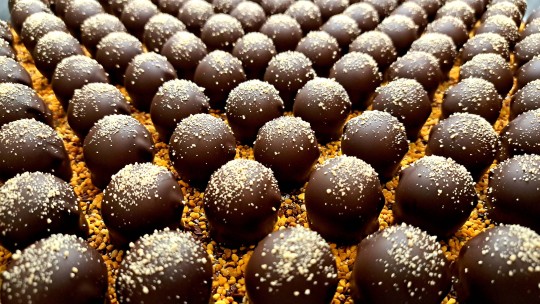







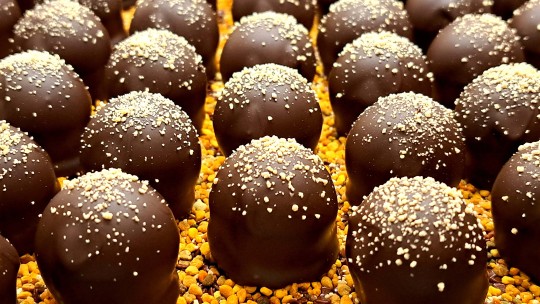
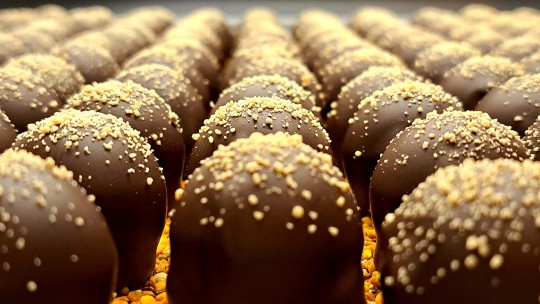






#seleuss#chocolates#seleusshoney#seleussleatherwood#leatherwoodhoney#tasmania#tasmanianhoney#tasmanianleatherwoodhoney#tasmanian leatherwood honey#honeychocolates#honeytruffles#seattlechocolatiers#bestchocolatesinseattle#seattlesbestchocolates#purveyors of haute chocolate#purveyors of chocolate#purveyorsofhautechocolate#tasmanianhoneycompany#milepost65
0 notes